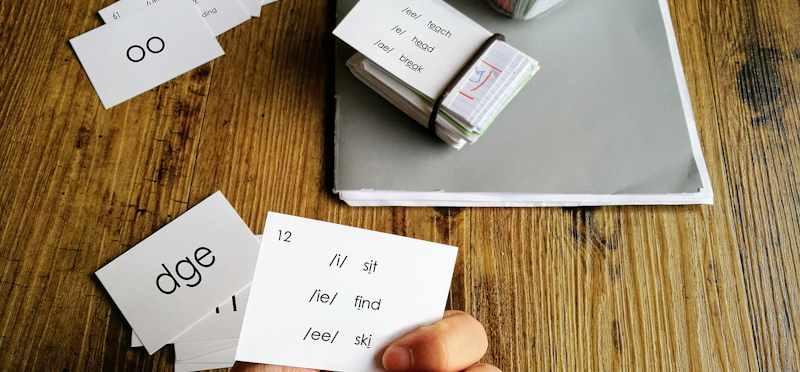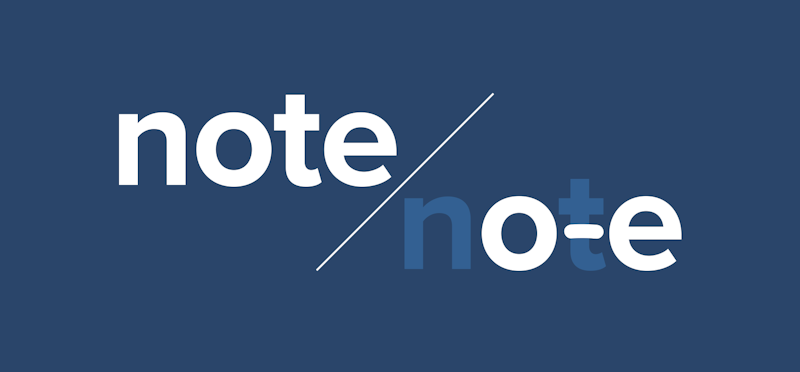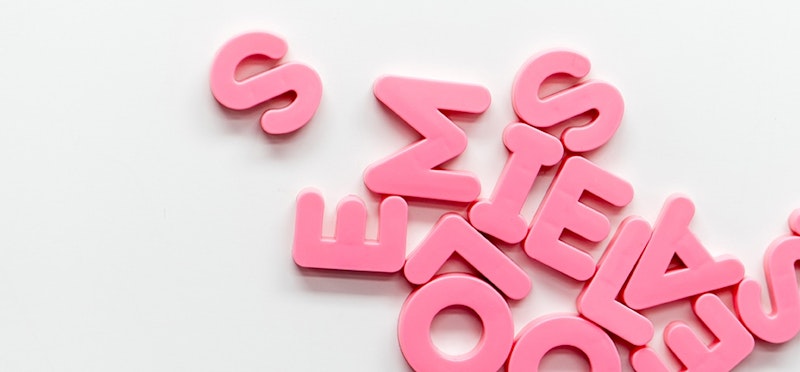If you read the article What Is a Sight Word, Really?, you learned that there are two types of sight words, those learned by rote memorization, and those learned by analyzing their phonics structure. You also learned that rote memorization by anyone, but especially a young child, is a chancy process, whereas learning by analyzing the phonics structure in their sight words gives children both a valuable tool set for analyzing all unfamiliar words, as well as a much sounder basis for recalling them later. And that goes for both spelling and reading.
What Do You Do When that First Sight-Word List Comes Home?
You really have two choices: You can let your child memorize them using his own devices, or you can offer him enough phonics information that he can memorize them the way he should, by learning their phonics structure.
Assuming you, as parent, now agree that the second approach is better, here's a suggestion: Use the OnTrack Reading Phonogram Set to teach him the phonics code he needs. It's available here as a free set of flash cards you can download and print out.
To illustrate one way you can do that, let's discuss the first ten words of the Ayres List (a list of the most common words found in print, starting with the most common, so a good source of what schools consider sight words.) The first ten words on the list are me, do, and, go, at, on, a, it, is, and she. Each of these will likely be one of the first few sight word lists your child will bring home to memorize for spelling (and reading, obviously.)
An Example: Teaching the Word "me"
Pull out card #10 (e) and card #16 (m) from the stack of flash cards. Start with #16 and see if your child already knows the sound of the letter m. Just show your child the card with the big letter m facing him and ask him "What sound is this?" (Don't add anything to that phrase at all.) If he says /m/ (the sound, not the letter name), tell him he's right. If he says "em", tell him "You said 'em'. That's the letter name, do you know its sound?" If he then gets it, fine. If he doesn't, say "This is the /m/ sound. We say /m/ when we see it in a word." Get him to say /m/ (the sound) then ask him the original question again, "What sound is this?" Then have him write it while saying the sound /m/, not the letter name. (Do this with every card you introduce, have your child write the phonogram while saying its sound, or sounds.)
Once he's said /m/, move on to card #10, show it to him and ask again: "What sound is this?' This time he probably won't know the complete answer, or even a partial answer. After hearing his answer, repeat what he said, then add "This one has two different sounds that it can be in words. This is /e/ /ee/. The two sounds are /e/ and /ee/." (Again, after he's saying that accurately, have him write the phonogram while saying /e/ /ee/.)
Now work with him for a minute or so getting him to say just "/e/ /ee/" when you show him card #10 and "/m/" when you show him card #16. (Remember, he should be saying sounds not letter names.)
Then point to "me" on his spelling list give him the two cards and have him spell the word by placing them down and saying their sounds, /m/ and /ee/. Tell the word me is using the second sound of the /e/ /ee/ phonogram.
Finally, have him write the word me on paper while saying /m/ as he writes m and /ee/ as he writes e. You will then have created the beginnings of a solid phonics base for what most reading curricula consider a sight word.
How Big a Project Will This Be?
That first list your child brings home will take some time, for sure, but consider this:
By my estimate, if you add sixteen more phonograms to that set of 84 you downloaded, bringing the total to 100 phonograms, you will have all you need to spell 99% of all English words. Of that 100, you have just taught two, so two percent of the phonograms have already been covered.
Furthermore, 69 of those 100 phonograms represent only one sound. Nineteen of them, like e, have two sounds, eight have three sounds, and four have four sounds to learn. Add those up and you get 147 items to associate with 100 phonograms. Your child already now knows three of those items, the /m/ of the letter m and the /e/ee/ of the letter e. That's more than two percent of the entire job already accomplished.
Again here are the other nine sight words, along with their cards, and the sounds on them:
- do - Card #3 /d/ and card #6 /o/oe/oo/ (do uses the third sound of #6)
- and - Card #1 /a/ae/o/, card #17 /n/ng/ and card #3 /d/ (and uses the first sound #1 and #17)
- go - Card #5 /g/j/ and card #6 /o/oe/oo/ (go uses the first sound of #5 and the second sound of #6)
- at - Card #1 /a/ae/o/ and card #20 /t/ (at uses the first sound of #1)
- on - Card #6 /o/oe/oo/ and card # 17 /n/ng/ (on uses first sound of both #6 and #17)
- a - Card #1 /a/ae/o/ (Teach the word a as the second sound even though we say /u/. A chlld will often say it with the /ae/ sound when emphasizing a point, as in "I want A cookie!)
- it - Card #12 /i/ie/ee/ and card #20 /t/ (it uses the first sound of #12)
- is - Card #12 /i/ie/ee/ and card #7 /s/z/ (is uses the first sound of #12 and the second sound of #7
- she - Card #27 /sh/ and card #10 /e/ee/ (she uses the second sound of #27)
So, assuming those ten words show up on your child's first ten-word sight word list. How much of the phonics code would he now know if you take the time to go over the phonics code in the letters that make them all up?
In those ten short words, eleven cards were introduced, or 11% of the phonics code he will need, and on those eleven cards, 21 different items of code were taught. That's just over 14% of all the items he will need to learn. And remember, the curriculum your school is using might never get around to teaching it all.
Spend just a little time showing your child the cards with two or three different associated sounds until he can look at, say, card #1 (a) and say /a/ae/o/ while writing the letter a and he will be well on the way to learning the complete phonics code he should be required to know.
Below, you can download the list of all 100 graphemes, sixteen of which do not appear on the free OnTrack Reading Phonogram Flash Cards.
And, Did You Notice?
Every single one of those supposed sight words was fully explainable by the phonics code that every child should be taught. In other words, they're not sight words in the sense that a child should just memorize the spellings because it's too hard to explain how to spell them using the phonics code.
If you repeat this process every time that dreaded sight word list is sent home, you will soon find that your child has an easier and easier time learning them because he already knows the phonics code for most of them.




